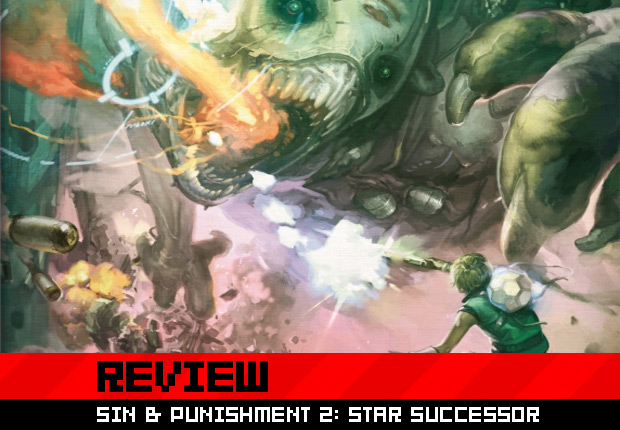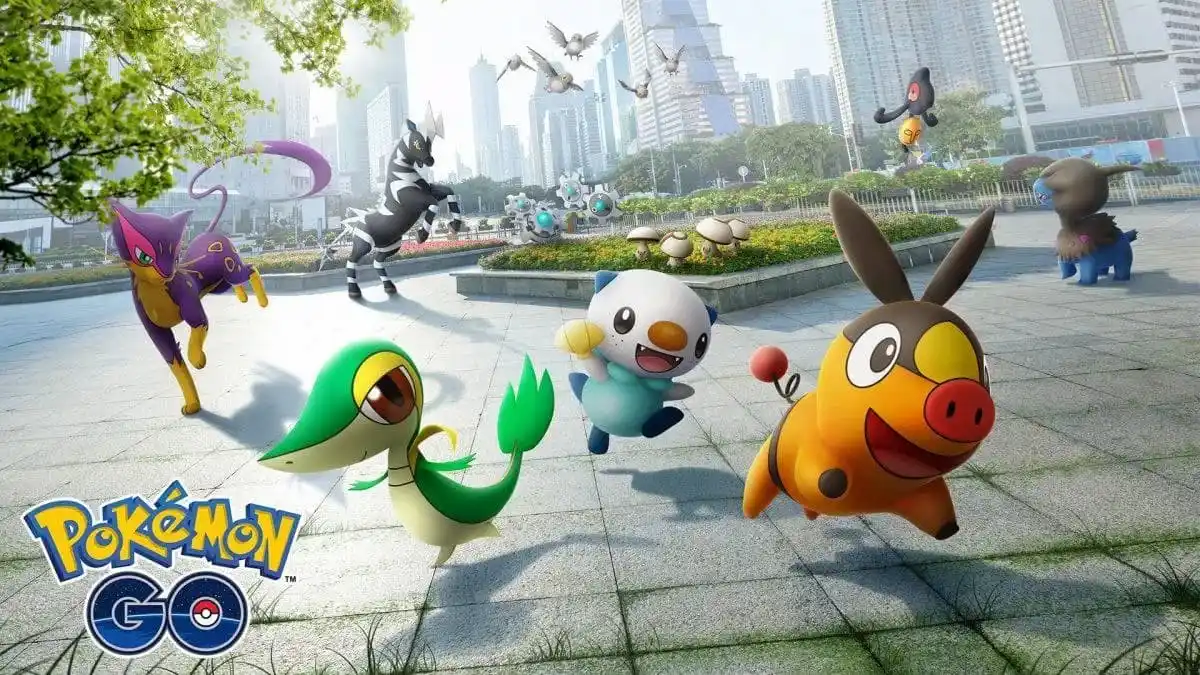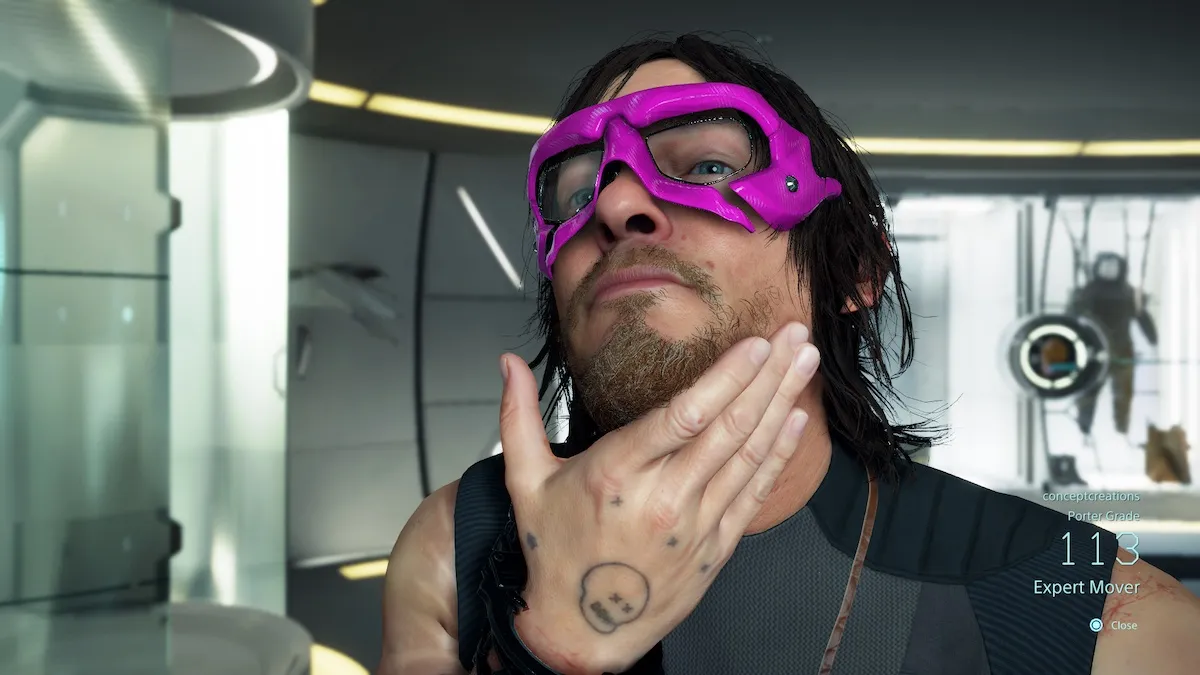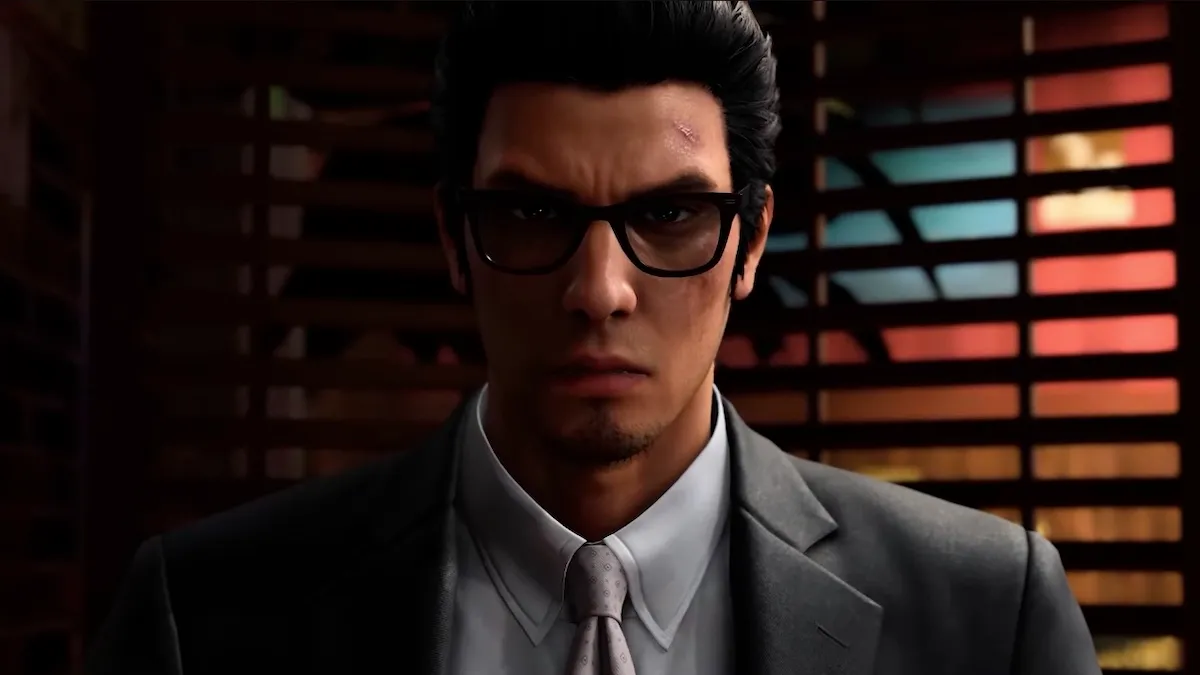By all rights, Sin & Punishment: Star Successor shouldn’t exist. It’s the sequel to a game that’s only been released outside of Japan on the Wii’s Virtual Console, one of the least popular download services in the home console market today. It also has one of the most unmarketable titles in recent memory. As for how it plays, the game is in the “3D shmup” genre, a style of game that hasn’t been popular for years, but isn’t quite old enough to cash in on the “retro craze.” In this day of Hollywood-blockbuster-style action games and motion-controlled family titles, Sin & Punishment: Star Successor sticks out like a sore thumb. It’s a doomed anomaly, a relic from a bygone era that few are nostalgic about, and the sequel to a game that very few people have even heard of, let alone played.
It’s also totally awesome.
You can add Sin & Punishment: Star Successor to the long line of Wii games that don’t have a chance in hell of making money — a list that also happens to include many of my favorite games from this generation. It’s not perfect, and some of the game’s flaws are pretty surprising, but all in all, I love it.
Please hit the jump so that I may justify my love.

Sin & Punishment: Star Successor (Wii)
Developer: Treasure
Publisher: Nintendo
Released: June 27, 2010
MSRP: $49.99
It’s hard to believe, but Sin & Punishment: Star Successor‘s name actually makes sense. This is a game about sinning in the “original” sense: defying the mandates of your creators and entrusting your faith in the person you’re most attracted to. The whole game consists of a series of punishments laid down for loving a woman. The game also shows how that love goes on to form something greater than the two of them, and how that love could lead to the creation of a new dominant life form in the universe.
That’s how I interpreted it, anyway. I’m sure that others see the game differently, assuming that they made any sense at all of the game’s bizarre storyline. It’s been a long time since I’ve played a game that’s this unsympathetically, un-ironically bizarre. I’m old enough to remember when it was commonplace for videogames to include stuff like the entire Russian senate joining together to form a gigantic robotic centipede without any explanation. That kind of stuff used to be the norm in AAA release, like how gritty war shooters are today.

Sin & Punishment: Star Successor can hang with the best of those weird-ass games of old. [Spoilers] In this game, you will see a mutant saber-toothed tiger chase you down a highway, only to eventually witness its bizarre union with an equally irate mutant vulture. They suddenly meld together to create a new form of life (cul-ture? vul-cat?) that can shoot lasers out of its wings. Beat it up, and it will offer you a free ride to Mount Fuji. Once at Mount Fuji, you will stumble upon crabs the size of small skyscrapers as they traverse fields of lava with ancient citadels on their backs. This is all after being attacked by ninja beetles in the dead of night in an ancient Japanese forest, a place packed with angry ghosts and groping zombie hands. The only way out of there is to repeatedly shoot a sexy bird-lady that looks like a cross between the Pokémon Cubone and tribal Sheva from Resident Evil 5.[/Spoilers]
And it goes on like that.
Sure, this kind of weirdness can occasionally be spotted in today’s games: Bayonetta, MadWorld, and No More Heroes (1 and 2) all have their fair share of inspired insanity. The difference is, those four games deliver the weirdness with a knowing wink and a tinge of irony. Sin & Punishment: Star Successor offers no such self-awareness. Like Akira and countless other avante-garde anime of the ’90s, Sin & Punishment: Star Successor delivers its madness with a totally straight face, and little to no explanation for its lack of conventional logic. If Bayonetta and its ilk are the modern equivalent of Woody Allen’s What’s Up, Tiger Lily?, Sin & Punishment: Star Successor is Fist of the White Lotus. This is unflinching, no-holds-barred Japanese videogame logic at its finest, and it’s fantastic.

I’d have to throw in more spoiler tags if I were to tell you the specifics of exactly how crazy and awesome Star Successor gets, but if I let myself, I’ll go on about that for hours. Instead, let’s talk about the game’s newest feature: its ability to fuse Wii Remote infrared (IR) aiming with old-school shooter action. IR aiming is optional (the Classic Controller and GameCube controllers are also supported, as is the goofy-ass Wii Zapper), but playing without it would be spoiling a lot of the fun. It’s really enjoyable to just point and shoot where you want to attack, but thankfully, it doesn’t make the game too easy. This is the most bullet-hellish 3D shmup I’ve ever played. Normally, 3D shmups don’t dare to fill the screen with bullets the way that side-scrolling 2D shmups do. When you’re dealing with X, Y, and Z axes, it’s harder to fairly fill the screen with 90% enemy bullets. It’s just not as easy to navigate danger on all three planes, which makes filling the screen with bullets a harder thing to pull off properly.
Most bullet-hell shmups need a out to keep them from being impossible. Ikaruga (also from Treasure) did it by allowing the player to become invincible to bullets that are the same color as their ship. Radio Allergy (available for Wii via Ultimate Shooting Collection) did it by giving you a sword to cut through enemy bullets before they strike you. Star Successor uses variations of both these tricks. By hitting the dodge button, you can become temporarily invincible (at the sacrifice of some character control). With your melee attack, you can destroy enemy bullets. That gives the game a little DNA from both Ikagura and Radio Allergy, helping Wii-owning shmup fans more reasons to feel right at home here.

Both of these abilities have some interesting drawbacks attached to them. The dodge may be a bit spam-able in early levels, but sooner rather than later, you’ll find that careless dodging will lead to nothing but death. When you dodge, you somersault into one of eight directions (depending on where you point the analog stick), and when you come out of the dodge, you’re completely defenseless. This requires split-second analysis of the entire screen before you dodge. Roll before you look, and you may bump right into some acid vomit or a giant laser-peacock feather. True masters of the game make dodging look easy, but for the rest of us, it’ll take practice and skill to master.
The same goes for melee attacks. The game has the sort of weak, standard, rapid-fire and powered-up charge shots that have been in just about every shmup since R-Type, but those are just the basics. The real way to rack up damage (and points) in Star Successor comes from proper use of melee. They aren’t just for beating the crap out of enemies who dare invade your personal space (though they’re good for that too). The bigger value of melee attacks comes from their deflective capabilities. If you’re attacked by a solid projectile (rock, missile, etc.), chances are that you can smack it back at your foe with a physical attack.

This isn’t a new idea. Every Zelda game since A Link to the Past has included this sort of sword-reflect counterattack at one point or another. Like so much of Star Successor, it’s not the level of innovation that makes the game great; it’s the excellence of the execution. Being forced to get so close to an enemy missile that you could hit it, launching a melee attack to deflect it, aiming with the Wii Remote to where you want to knock the reflected missile (usually towards a moving target) — all while keeping track of enemies, enemy bullets, environmental hazards, and other opportunities for attack and defense, and working hard to survive while racking up a high score — makes for a thoroughly exhilarating experience. Again, that’s nothing new to the shmup genre, but it’s the most that any shmup can aspire to. That’s thanks to the craftsmanship and creative design found here. Everything is just so clever: the bullet patterns, the boss attacks, the stage layouts, the visual designs, the environments, the way it switches from a 3D shmup to a 2D shmup on the fly, the 20+ bosses, the giant chickens on the highway, the… everything.
Wow, that’s a lot of praise! So what’s wrong with the game, then?
Well, some will complain that it’s too short. It took me about 7 1/2 hours to beat the game the first time through on normal difficulty with the male protagonist Isa. A second playthrough with the game’s other playable character, Kachi, went a little quicker, as I’d gotten a lot better at the game since the first time around. Still, it took some time due to her different play style (different lock-on, weaker charge attack that can target multiple enemies). The fact that Kachi plays in a new way made the game feel fresh, but more importantly, the game had packed my brain with so many set pieces that I had actually forgotten how it all started. With only a vague memory of the first level still in my mind, beginning the game again just a few days after the first time I played, it still felt like a new experience.

After beating the game with both characters, you open up a mode where you can play through the game as a tag-team Kachi-and-Isa combo, which brings even more new techniques to the table (and an additional ending after you’re done). To me, that’s an exceptional amount of replay for a shmup, especially when you consider the inclusion of huge online leaderboards (local, national, and international). Still, I know a few of you out there will say, “7 1/2 hours on the first run? For $50? Pfft, no thank you.” For those of you with that “game’s length = game’s worth” attitude, you have been warned.
Other than that, I just have a few nitpicks. The game has a co-op mode, but the second player doesn’t get a controllable on-screen character, just an on-screen aiming reticle (like the co-op mode in Super Mario Galaxy). Considering how the disappointing but ultimately enjoyable Zombie Panic in Wonderland allows for true simultaneous two-player co-op, it’s weird that a better game like Star Successor lacks the option. It’s also a bummer that the game has online leaderboards, but no online co-op, replays, etc. Those sorts of additions cost money, but they go a long way towards making a game more desirable.

To be honest, none of those niggles really bothered me, but I know they’ll bother some of you. The only thing I personally hate about Star Successor is the uncharacteristically crappy-looking faces on most of the game’s “human” characters. It’s only noticeable in the game’s eight or so cut scenes, but it’s still visually grating. By my count, there are six humanoid characters in the game (including the two leads). Out of those six, four of them have the exact same face model, and what an ugly, lifeless face it is.
There is a scene towards the end of the game, after you leave Mount Fuji, where looking at the two lead characters head-on actually made me feel something for them. For the most part, though, their faces just grossed me out with their mannequin-like demeanor, like the actors in all the post-Unbreakable M. Night Shyamalan movies. I understand that this game came from a small development team without much of a budget, but I would have much preferred they cut the funding for the pop song that plays during the end credits and used that money to make the leads of Star Successor look less like creepy Thunderbirds-esque devil-dolls.

Would I love Star Successor if the current gaming climate were as packed with third-person shmups as it is with first-person shooters? I think so, but under those conditions, the game would have had to struggle a lot more to get my attention. As it stands, Sin & Punishment: Star Successor is the only retail release of its kind in town, and for fans of the genre, that’s reason enough to stand up and take notice. Thankfully, Star Successor did more than get my attention. It’s an amazing game, one that I see myself playing for years to come.
Score: 8.5 — Great (8s are impressive efforts with a few noticeable problems holding them back. Won’t astound everyone, but is worth your time and cash.)





